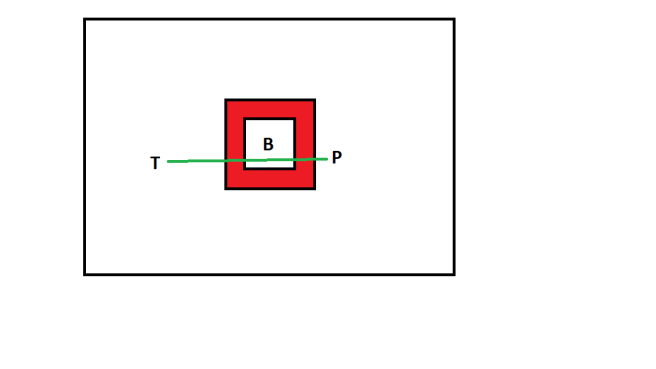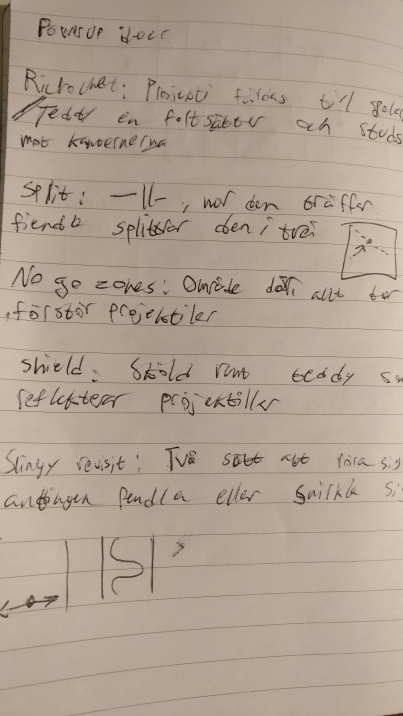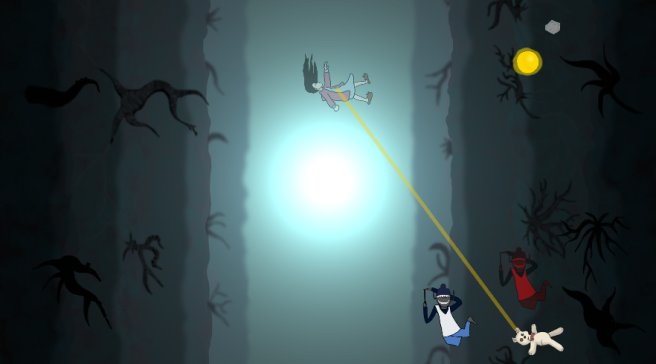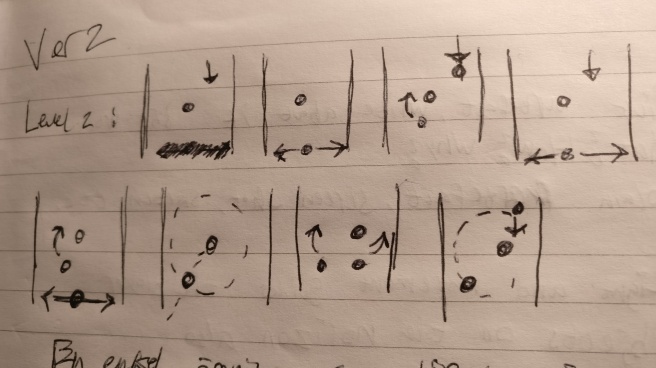With little time to spare we forged on this week in order to complete the game’s features and have them working to fulfill beta. We identified the missing parts as sprites, sounds, background and the final boss. Since powerups and changes to shooting has been made from the beginning of the project, the boss has been on the backburner for a long time. Now that we have them where we want them, it’s was well overdue to complete the design for the boss and have the teams programmer start working on it. You may say that it’s madness to begin work on a boss with such limited time, and you’re right! But we all felt that a boss was the only right way to explain the narrative and have a satisfying ending.
On monday me and the programmer sat down and started to discuss the mechanics of the final boss and in what way he would challenge the player on everything that had been taught up until this point. Our game is heavily focused on keeping two characters safe and positioning them strategically to deal damage is the key to stay alive. So we decided to place the boss in the center of the screen which was the ideal way for the rest of the boss to fully function with our core mechanics. Because the player would have to position themselves and the Teddy on opposite sides of the boss we to deal damage decided that challenging the player on each side could lead to interesting choices. Within the red square of the picture, the boss is able to move, selecting a point and moving towards it, when reached it repeats the cycle, thus not creating a stale boss that is not pleasant to look at. It also makes the player chase after the boss at times.
Teddy(T), Boss(B), Player(P)

So how would we do that? First we figured out why the player would want to stay on a certain side of the boss. A popular concept of boss design is that the boss has some sort of weakness, usually a part where they have a chink in their armor or the like. Since our boss has four sides we decided to utilize them as some being more vulnerable than others. Some sides we decided would be “half weak” and “full weak” meaning that the fully vulnerable sides take the most damage and also is a safe spot. It’s the only spot on the boss that currently has no attacks that could harm the player. Placing the player at this side would mean that they can no damage until the sides changes but placing Teddy here would mean that you would have the highest damage output.
However, why would you not want to stay at one particular side? Well, we decided that each half weak side would have access to one of three weapons, each equipped differently. One would be a shotgun blast of projectiles, where one of the slugs would create a gap where the it’s safe. This pattern is randomized and constantly paying attention to when the projectiles are moving forward is the key to adapt safely. Another one would be a rapid fire of projectiles each randomized on five potential spawn points. Maneuvering between these projectiles is the safest option to stay alive. Finally, we have a wild card of a weapon, a ricochet projectile that could lead to extreme danger or potentially be a secure option, depending on the position of the boss. Bouncing off of walls, it’s less predictable than the other weapons but is a gamble. Remember, perhaps the fully weak side is on the opposite side, meaning that you can make the choice to either be likely to lose less health, but deal less damage or risk losing health but deal more damage. You could also go the absolute opposite way and choose the two half weak sides, sure they are both dangerous, but if you are having trouble with one particular weapon, it’s a compromise that can be made. There are more things planned for the boss, but the core of the boss is what I think would be the most intriguing to discuss.



